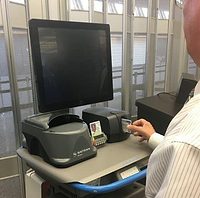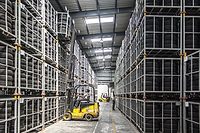When we use the term Intelligent Technology at Panasonic, we are also talking about designing and engineering products that address specific dealer and end-user needs. We identify these needs based on our market awareness and, more important, by listening to what our customers and dealers have to say. For example, a critical security surveillance application is identifying abandoned or newly placed objects. Maintaining this level of attention to detail can be fatiguing to security personnel monitoring video over many hours. To address this issue, we developed Super Dynamic 5 (SD5) technology which automatically detects new objects or those removed from a scene.
Intelligent technology can help increase the efficiency and effectiveness of the security staff in many other ways as well. Automated responses can alert management about defined events and zoom in to an object which is creating an alarm. A system can be set up to transmit only video that contains activity, saving bandwidth and making it easier and faster to search recorded material in the event of an incident.
Taking a larger view, businesses can use intelligent technology to improve efficiency across multiple business operations throughout the enterprise. Visual information and data can be integrated with other applications such as retail systems, human resources, process management or access control systems, creating new benefits and opening up new business possibilities.
Taking a larger view, businesses can use intelligent technology to improve efficiency across multiple business operations throughout the enterprise. Visual information and data can be integrated with other applications such as retail systems, human resources, process management or access control systems, creating new benefits and opening up new business possibilities.
A great example of this solution-oriented thinking is our Virtual Site Manager software, which combines video surveillance and point of sale systems onto a single seamless platform. It gives retail businesses a multitude of tools for loss prevention, inventory management, traffic control, store design, customer service optimization and more. Again the bottom line is more than video surveillance; it is about improving overall business operations while minimizing total cost of ownership. Today’s business owner and manager have a sharp eye for numbers and are always looking for solutions that deliver a better return on investment.
Another way of making technology intelligent is through intuitive, rather complex set up operations, both for the systems integrator and ultimately, the end user. The more intelligence built into the product, the more quickly the user will be able to get up and running and benefit from their investment in new technology. Understanding this dynamic led to our development of Auto Back Focus (ABF), which automatically adjusts the CCD position to achieve the perfect focus when the camera switches between monochrome and color modes to adjust for time-of-day light levels. ABF saves time and labor during installation since camera focus can be remotely adjusted after installation.
Finally, a definition of intelligent technology should include technology that is thoughtful; that is, developed with an eye to preserving and improving our environment. This means working towards elimination of lead solder in all products, creating packaging that is recyclable with less waste and introducing products that help reduce energy consumption. We are doing all this and more as part of our global eco ideas initiative, which also includes a commitment to reduce CO2 emissions across all our manufacturing sites.
Ultimately intelligent technology is a term used to cover a lot of ground, but it all leads to one objective: using technological developments that make products perform better while also making them easier to use. Good product design does much more than simply add multiple feature sets – it provides real value to the integrator and to the end user which translates to a better experience in installation, integration, usability and return on investment.



